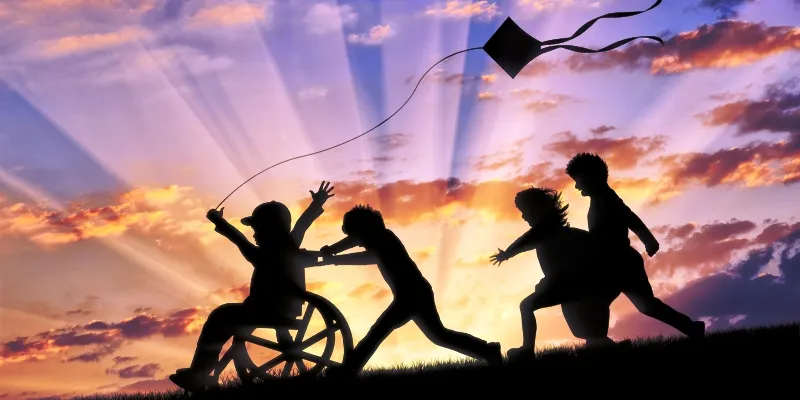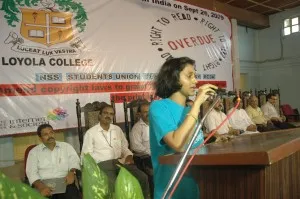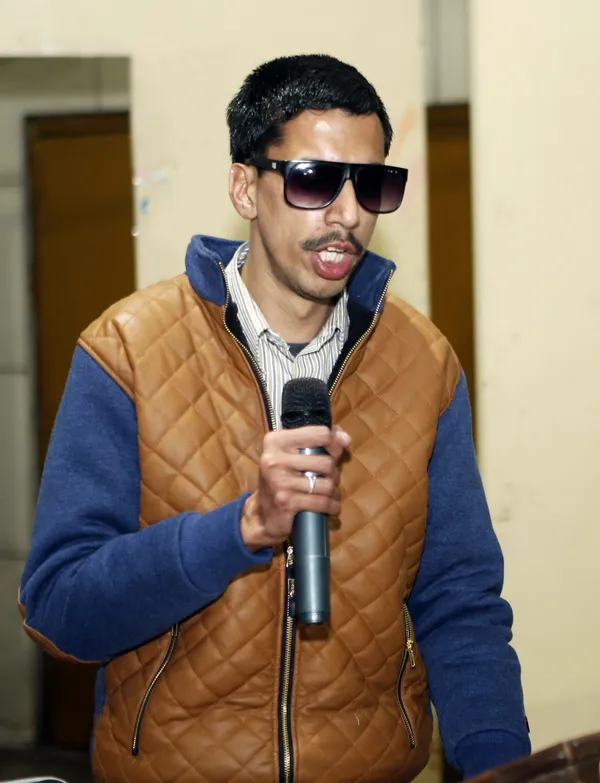India has a long road ahead in becoming a disabled-friendly country
India is home to 2.7 crore people living with one or the other kind of disability. According to the 2011 Census, 2.21 percent of India's population is disabled. Unlike the developed world, India's disabled are made further socially vulnerable by lack of quality education, lack of women’s safety, and attitudinal barriers as they continue to grapple with the challenges of access, acceptance, and inclusion.

Changing times
Until a few decades ago, it was almost unimaginable for the disabled to lead independent lives. The advent of technology and internet has, however, opened new doors. A print-impaired person can now listen to audio books and learn. The Ministry of Social Justice and Empowerment has recently announced Sugamaya Pustakalaya, an online library where books are made available in different accessible formats for people with visual impairment and other print disabilities.
With hearing aids, surgical intervention, and other disruptive technological solutions, deafness is now curable. Consequently, the disabled are independent and contributing greatly towards society. The wheels of such change, for a majority of people, have already been set in motion in the developed world.
In developing countries such as India, however, the road to accessibility is a long, winding one. As Javed Abidi, director of the National Centre for Promotion of Employment for Disabled People (NCPEDP), has recently pointed out in an article,
“Just one in 250 hotel rooms in India are accessible for the disabled. Globally, internationally, the ratio is 1:50.”

Accessibility is a major issue for the disabled, not just in the physical world, but in the digital space as well. Despite existing technology and standards, the problem of non-adherence to standards of accessibility and universal design in electronic devices and websites is a perpetual one. According to Nirmita Narasimhan, Policy Director, Centre for Internet and Society, Bengaluru,
“Standards exist for websites (WCAG 2.0), electronic documents and publications (EPUB 3.0) and other forms of technology, multi-media, and content which will make it easy for the developer to create accessibility products. Unfortunately, these are not being adhered to. We are overflowing with technologies which can potentially be of immense use to persons with disabilities. The market, however, fails to realise that there is a huge business case in tapping the market of persons with disabilities.”
Read More
Don’t turn a deaf ear to hearing disability in India
8.3% Indian households have disabled persons, according to survey
Change in legislation
The existing legislation that safeguards the rights of the disabled in India — Persons with Disabilities (Equal Opportunities, Protection of Rights and Full participation) Act 1995 (PWD Act) — is outdated. Although aimed at protecting the rights of persons with disabilities, the act has a narrow definition of disability, and places limited obligations on the state. For instance, obligations to make the environment barrier-free are subject to the economic limitations of the state, leading to very little affirmative action taken by any state to become disabled-friendly.
The new Right of Persons with Disabilities Bill, 2014, which is currently being presented before the Parliament, aims at solving these issues. While it is certainly a step forward from the outdated legislation of 1995, it still fails at inclusion standards. Although it has increased the number of benchmark disabilities from 7 to 18 and aims at providing free education up to 18 years of age, increased reservation of seats in higher education institutions and government jobs from three to five percent, along with other benefits, such benefits are limited to only those with a disability level of 40 percent or above.
NGOs, activists, and members of civil groups have demanded elimination of the disability level clause and extension of reservation into private jobs, since employment has shifted greatly towards the private sector since the old bill of 1995, whose clauses have been retained. They have also demanded that government initiatives should align with the goals of accessibility. According to Nirmita,
“The government has recently launched the Accessible India campaign to promote and raise awareness about accessibility. There are also two other campaigns — the Digital India campaign and the Smart Cities Mission which can potentially see convergence with the theme of accessibility and go a long way in implementing it.”
Read More
The Persons with Disabilities Act of 1995, simplified
Why India must ensure every newborn undergoes compulsory screening for deafness
Enabling the future
With growing citizen concern for the disabled community, countless intelligent solutions have surfaced. Successful information portals such as Enable Academy and Enabled.in designed specifically for the disabled up to browse for information on assistive products, education, schemes, jobs, and events in a participatory way have come up. Sathasivam Kannupayan, who has nurtured Enabled.in since 2009 and is currently running it with a much larger team, says,
"We believe that the web is an essential communication tool and people with disabilities should have an equal and barrier-free access to information. Every product and service should be available and usable to all users regardless of their physical ability."
Apart from the digital space, technological advancements have also helped young academicians engage in creating indigenous assistive devices for the disabled. According to Sujatha Srinivasan from the Department of Mechanical Engineering, IIT Madras,
"Functional, high-quality devices that are also affordable are a must for people with disability to enable users to live fuller, more comfortable, more independent lives. Increased awareness and support from the government and NGOs for such devices are also necessary for better adoption. Startups working in the field of rehabilitation should be encouraged and supported to cater to this market."
Sujatha runs the Rehabilitation Research and Device Development (R2D2) lab at IIT Madras, focusing on assistive device development for the disabled. With the goal of engineering and developing indigenous and affordable products for the disabled, the lab has created working prototypes of a standing wheelchair, a body-movement wheelchair, an add-on for outdoor mobility, a walker for children with cerebral palsy, a swimming pool lift, a prosthetic knee for uneven terrain, and a tri-state orthotic knee.
Read More
In Mumbai, Mirakle Couriers’s 45 deaf employees are handling over 2,000 couriers a day!
Meet Akshsansh Gupta who is 95% disabled, and has received a doctorate degree from JNU
Role of the media

Amidst the ongoing efforts being taken by citizens towards making the future more accessible for the disabled, the media will have to take greater responsibility. The media alone can raise the level of sensitivity among the masses and take our society towards becoming a more inclusive one. According to Danish Mahajan, one of the founders of Radio Udaan, an online radio initiative for the visually impaired,
"We have seen a number of discussions and debates on the GST Bill, but there are no discussions or debates on the RPD Bill. Personally, the first time I saw people with disabilities on TV was when I saw visually impaired people play cricket on Doordarshan."
With policies, citizen initiatives, technological progress, and popular media coming together, the challenges of access, acceptance, and inclusion will get addressed. Until this is done, a major part of our population — 2.7 crore citizens — will continue to live in economic, social, and physical vulnerability.







